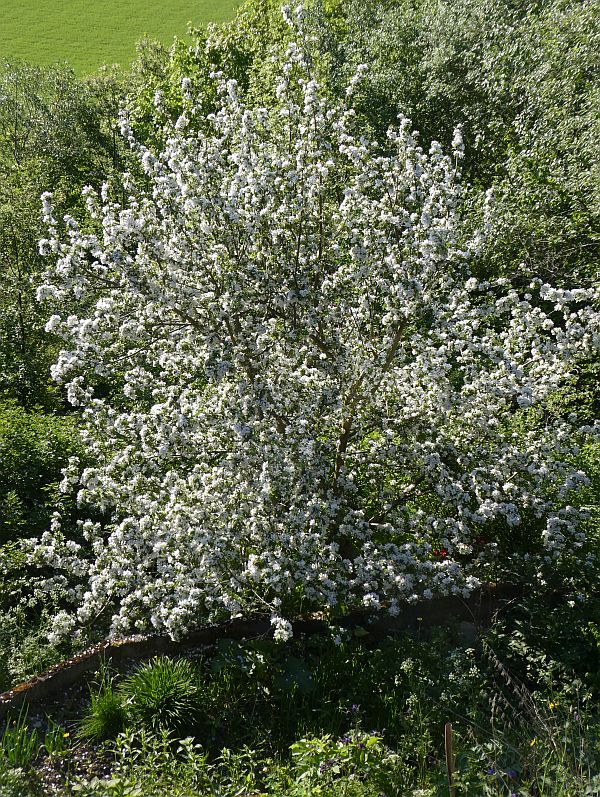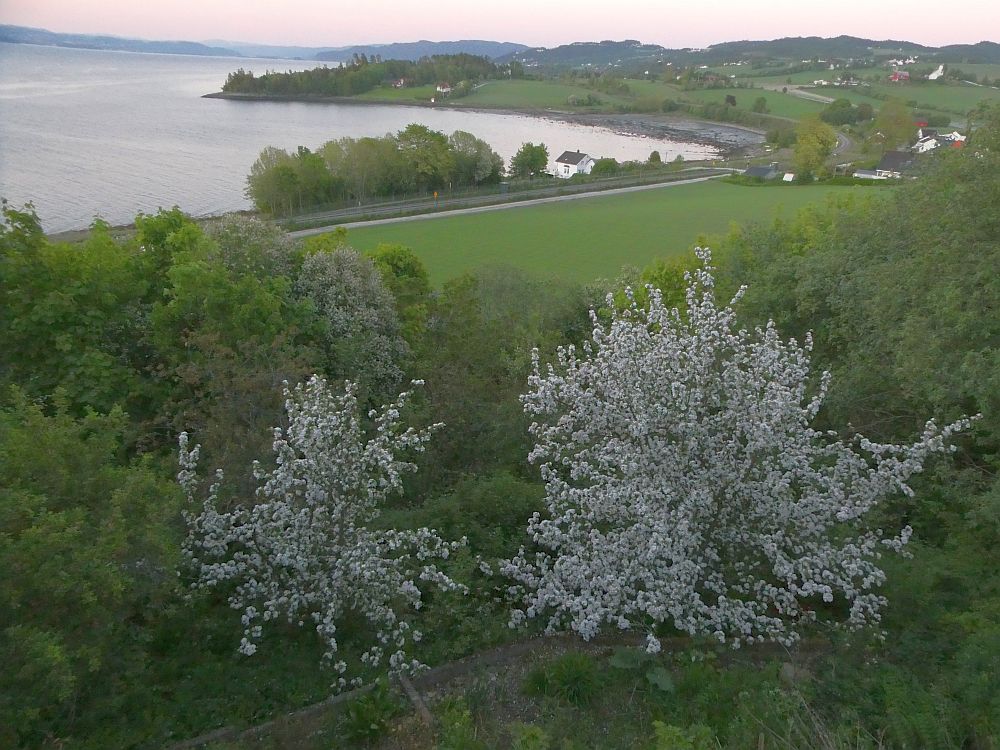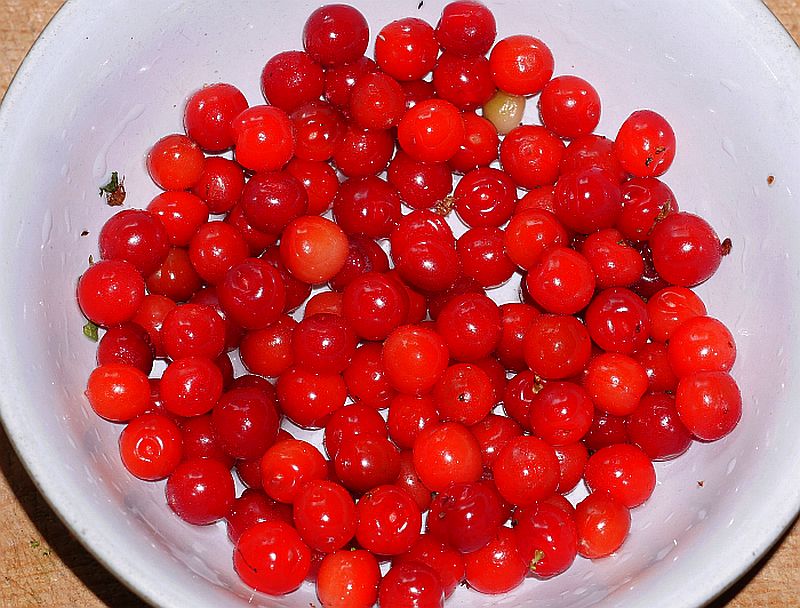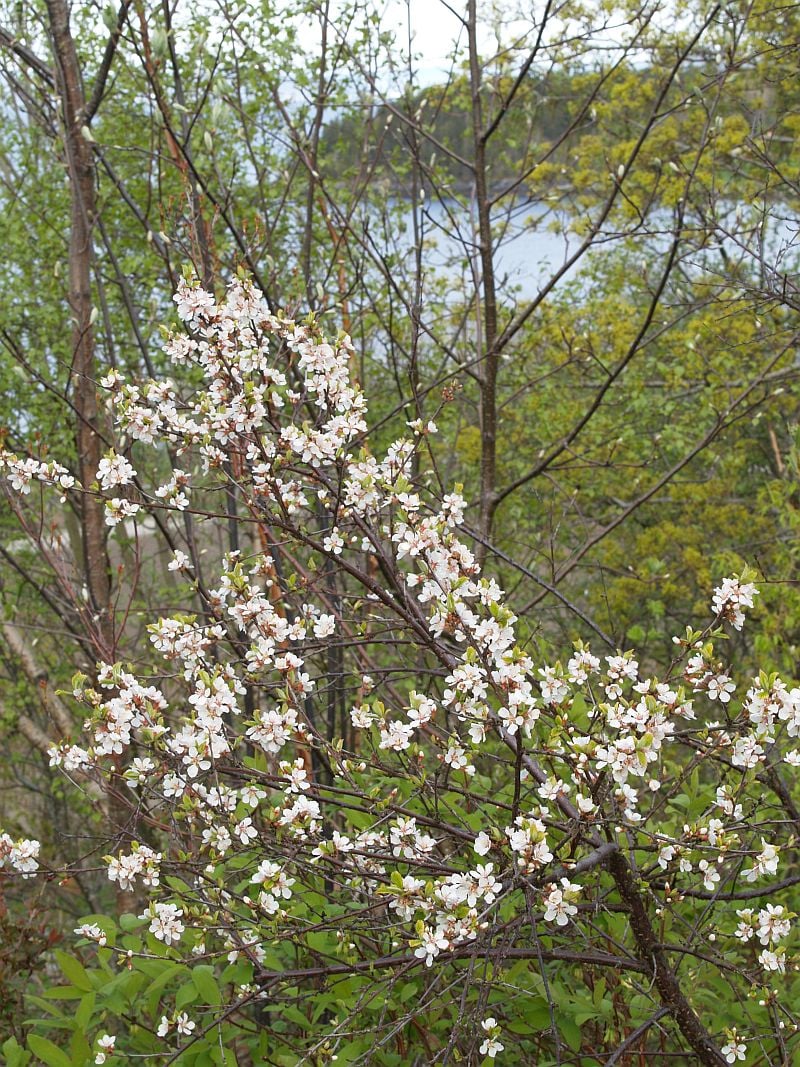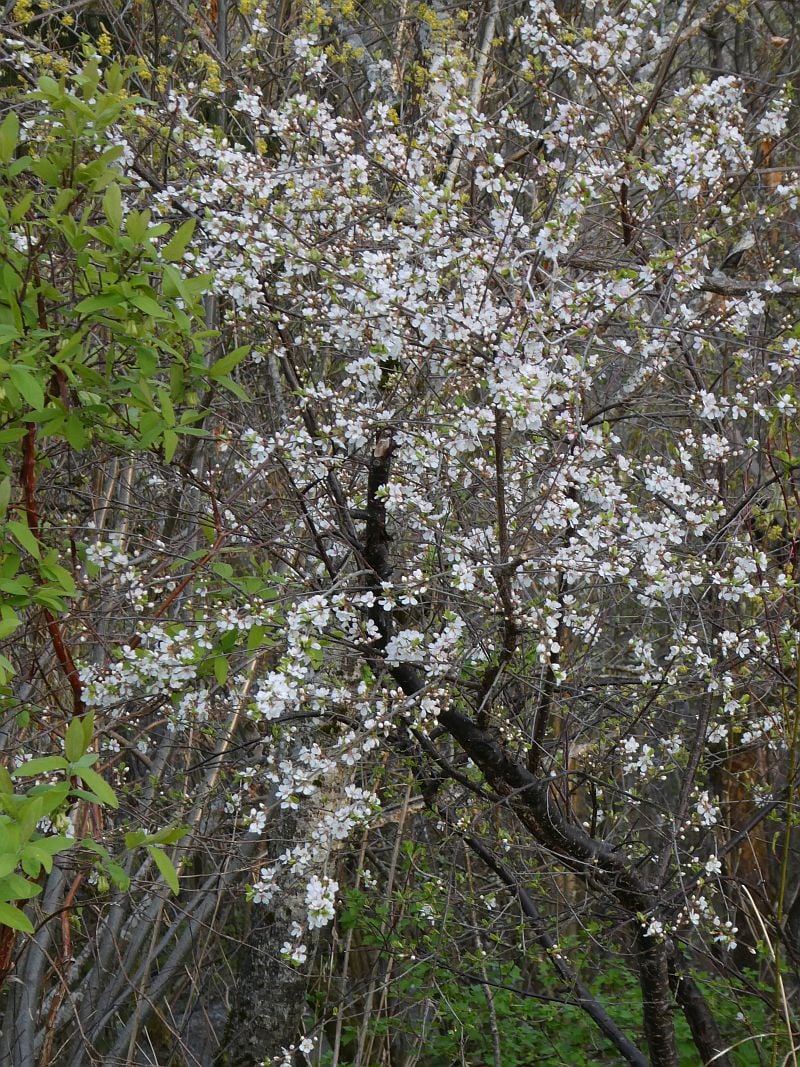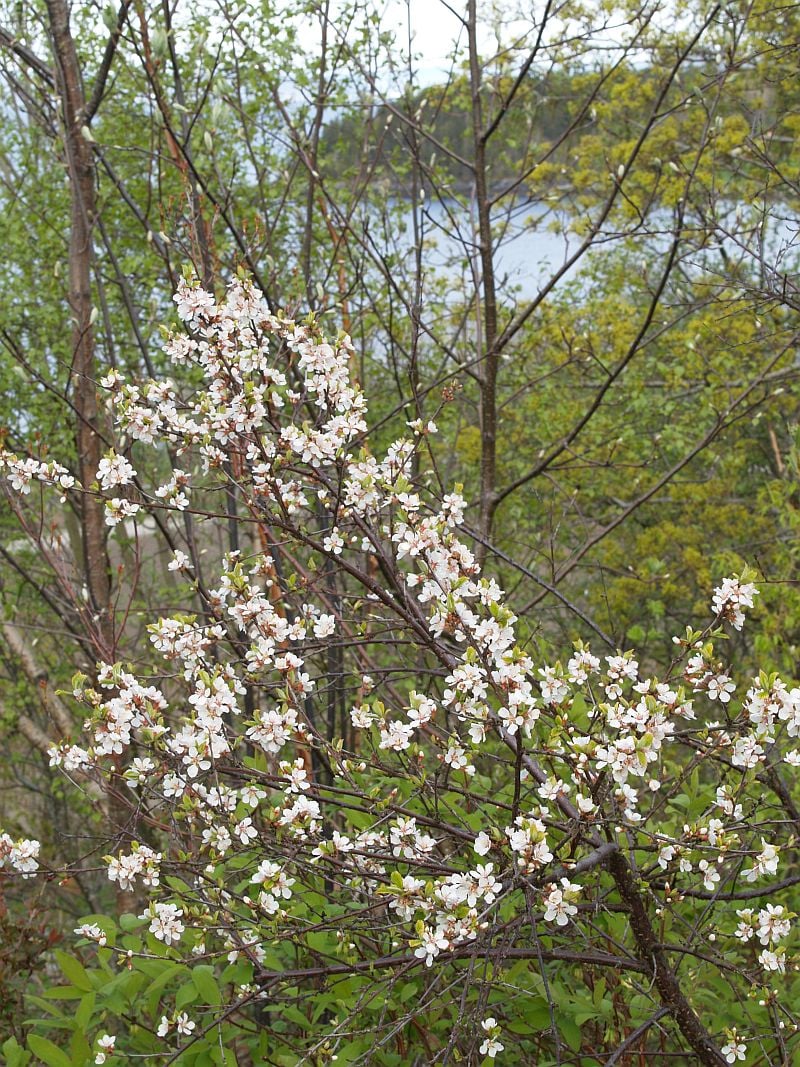I’d followed KVANN (Norwegian Seed Savers) member Per Hofsli on social media for some time for his interest in nut trees and I’d learned that he was even grafting for sale, not the easiest of genera to graft as the process needs warmth. I was therefore pleased to be given a tour of his garden in Asker (Oslo) on 20th August when I was in Oslo for KVANNs herb seminar at Linderud Gård. Although most are still young trees, it was truly impressive to see all the nut trees in his garden including many varieties of walnuts, heartnuts, buartnuts ( ), chestnut, hazel and almonds. However, most impressive was his amazing collection of fig varieties and my visit was perfectly timed to be able to sample some of the best tasting figs I’ve ever eaten, in particular one (Campaniere) that had a rich honey taste. He grows them in large pots and brings them in for the winter as outside they freeze back to the roots and don’t then manage to ripen by the autumn.
There were also a number of varieties of aubergine and a wonderful “family” pear tree, to which he had grafted on 15 varieties!!!
I came away with a dwarf walnut created by Lars Westergaard: Mini Multiflora #14, grafted by Per (thanks!), a variety I believe I saw when I visited Westergaard’s nursery in 2016: https://www.edimentals.com/blog/?p=6438
I didn’t take many pictures as it was raining a bit. I hope I will be able to revisit in 10 years to see how this place has developed :)
Category Archives: Fruit
Autumn berries and fruit
As far as possible, I like to eat fresh fruit and berries from the garden, usually with muesli for breakfast. I’ve been self-sufficient for many years, mostly home grown but augmented with wild foraged bilberries / blåbær. From when the cellar stored apples are finished, usually in April to the first haskaps and strawberries are ready, we go over to rehydrated dried fruit. Currently these are the berries and fruit we are eating now in autumn as the first frosts threaten:
1. Elaeagnus umbellata (autumn olive; Japansk sølvbusk)
2. Rubus ‘Sonja’ (blackberry; bjørnebær) – the only blackberry cultivar I am aware of that is hardy enough for our climate, not freezing in winter. Productive with tasty berries too!
3. Ribes divaricatum “Worcesterberry” (Worcesterbær)
4. Ribes biebersteinii (Ribes petraeum var. biebersteinii) (black redcurrant; svartrips); isn’t truly black, more dark purple coloured; hang a long time on the bushes and don’t seem to be taken by thrushes (like blackcurrants)
5. Malus domestica (apple; epler) – eating the windfalls that won’t store long.

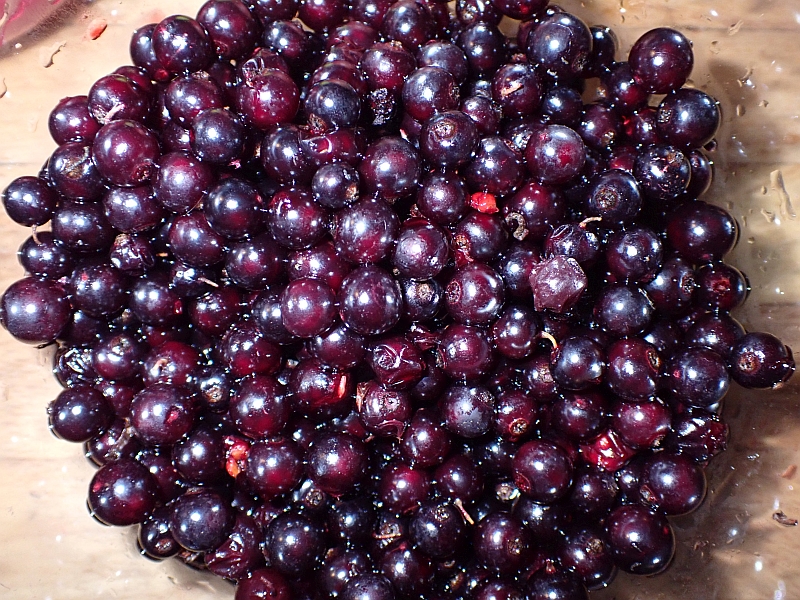
More fruit and berry leather
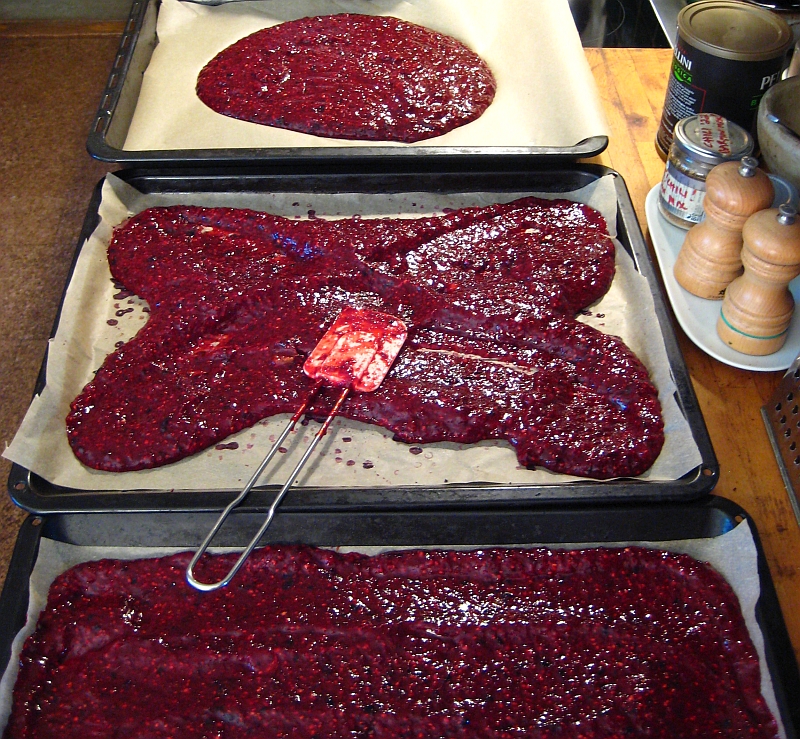
July berries
Various berries harvested late July at home in the Edible Garden and in the Væres Venner Community Garden. More information in the picture captions. These were either eaten fresh for breakfast with muesli or were made into mixed fruit leather!
Worcesterberries and Cellary
With a series of -4C nights forecast, I’m harvesting and moving the last vegetables into the house and cellar. There are still many Worcesterberries (Ribes divaricatum) in perfect condition, eating with apples with muesli every morning. Harvested another load this morning as I expect that they will freeze and drop to the ground. 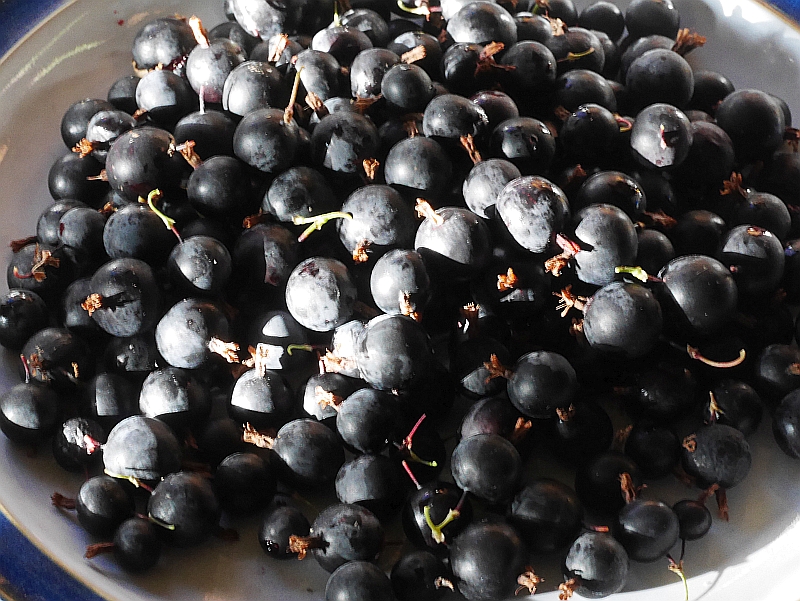 I also harvested the last celery from the garden this morning, replanted in pots in the depths of the cellar where they will sleep until spring as cellary, ready to harvest whenever I need them. A couple of plants were also moved from the balcony, grown in pots for ease of access, to the kitchen for even easier access, one of them attractiv edimental “Red Stem” celery…
I also harvested the last celery from the garden this morning, replanted in pots in the depths of the cellar where they will sleep until spring as cellary, ready to harvest whenever I need them. A couple of plants were also moved from the balcony, grown in pots for ease of access, to the kitchen for even easier access, one of them attractiv edimental “Red Stem” celery…
Daniil and the Apples
Having survived the wapato harvest last week (see https://www.edimentals.com/blog/?p=31597), our helper Daniil Titov was put to another challenging, harvesting the last apples….there are always many apples that we cannot reach with the apple picker, so tree shaking has to be resorted to as it’s too dangerous to use ladders on the steep slope. These will be dried in the near future. We already have enough for eating fresh until April in this year’s bumper harvest of Aroma apples. There are still quite a few at the top of the tree which couldn’t be shaken down, left for the birds.

Waxwings on apples
Waxwings (sidensvans) have arrived here in numbers with about 70 in the garden today! Most of their favourite berry, rowan (rogn) had gone by the time they arrived due to the large flocks of thrushes that were here a week ago (mainly fieldfares, redwings and blackbirds / gråtrost, rødvingetrost og svarttrost). They had opened up quite a few apples near the tops of the trees before they moved on, and now the waxwings are enjoying them – they luckily don’t try to open other apples, so that there are still many for us! We’ve been harvesting the last few days, but still a lot near the tops of the trees that are difficult to reach even with the apple picker!
Physalis “Indian Strain” at 13
The last time I blogged about this Physalis it was 7 years old. It is now 13 and still going strong. The last time I wrote about it, I wrote the following: “This Physalis which I’ve called “Indian Strain” is now going into its 7th year. I got this from Seed Savers Exchange in the US. However, that one is supposed to be a tomatillo and I wonder if I mixed it up with another I got at about the same time, P. heterophylla, clammy ground cherry, although the stems are not clammy (sticky) to the feel. That would explain it’s hardiness as it is found in the wild north to Canada (see http://plants.usda.gov/core/profile?symbol=PHHEH3). I definitely planted heterophylla in the garden and it’s survived since 2009 without winter protection, but the summer is just too cold for fruit (it does flower).
It lives in a cold bedroom all year and produces a few fruit most of the year, even continuing to ripen fruit despite the temperature being often under 10C. The fruit are sweet and have good flavour. It’s not hugely productive but little bother (aphids don’t bother it). I cut it back when it gets too straggly”.
I repotted one of them today and cut all 3 plants back to 1/3 height (it reaches the ceiling).
The conclusion is that it is a cape gooseberry / goldenberry (Physalis peruviana).
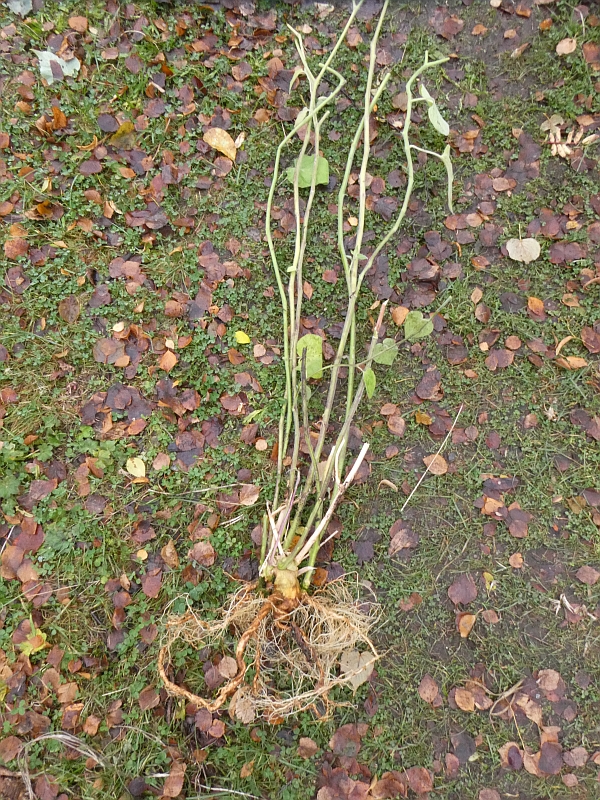

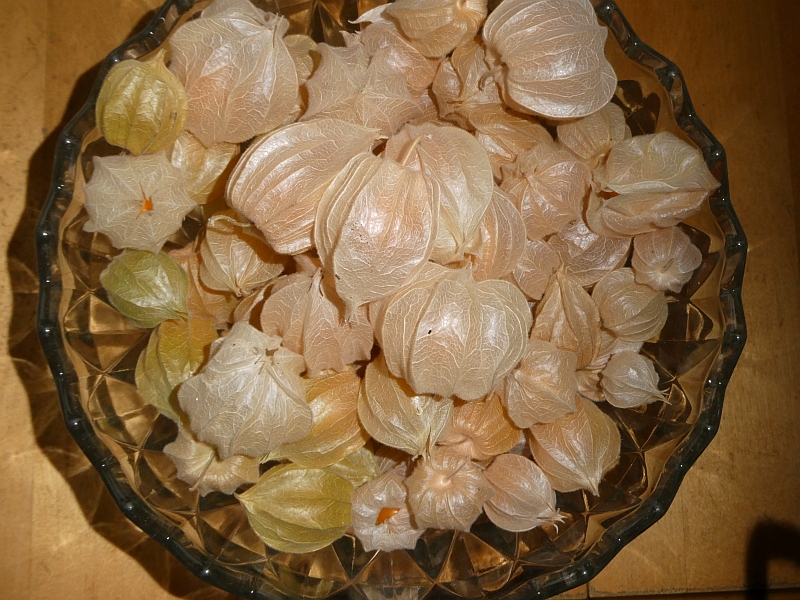

Nanking cherry harvest
They are also fantastic when blossoming (and full of fruit), so a valuable edimental in any case!
And, yes I do save the seeds for sharing with Norwegian Seed Savers (kvann.no).
Dried fruit salad
The fresh fruit season approaches rapidly as the first fruit ripens…wild strawberries (markjordbær) and haskaps (Lonicera edulis). Since the fresh apples ran out early April we’ve been eating delicious rehydrated dried fruit salad every day. We mix different flavours (sour and bitter and sweet) in the same way as in mixed salads. Here are the recipe and ingredients in this year’s “Summer in a Bowl” mix: apples, wild bilberries, raspberries (from the hills and garden), yellow raspberries, redcurrants, saskatoons (Amelanchier), rhubarb, sour cherries and gooseberries! We both made mixed fruit leather and dried the berries as they were (mixed together in the rehydrated mix). I never buy fruit and never use sugar for preserving and don’t own a freezer (by choice).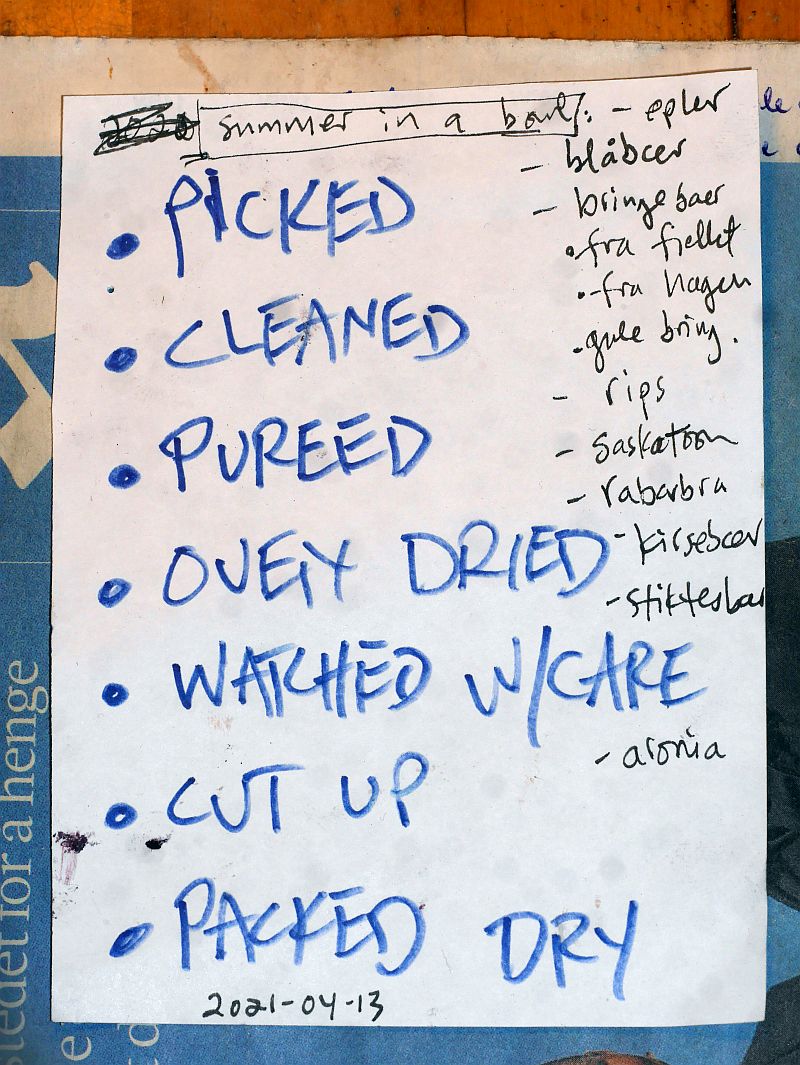 Rehydrated fruit mix for breakfast every day is delicious:
Rehydrated fruit mix for breakfast every day is delicious:
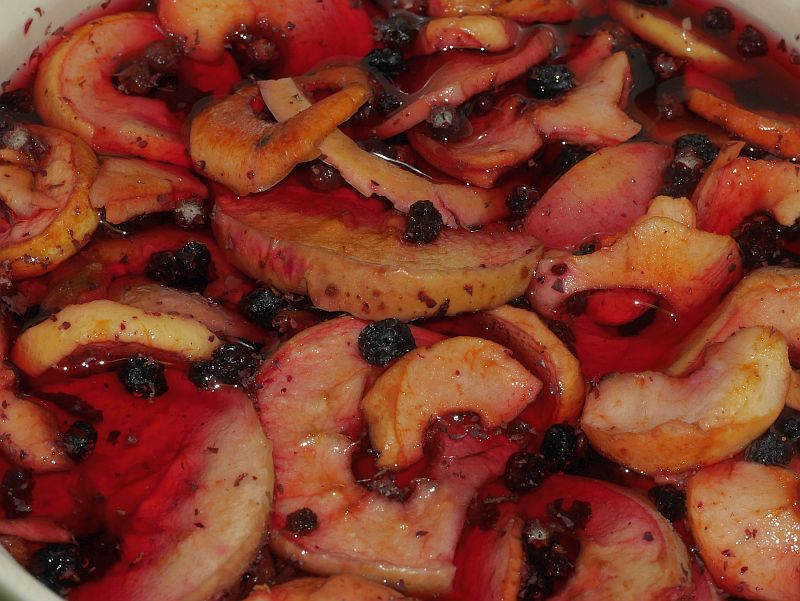
The first ripening berries of 2021 (wild strawberries and haskaps):

…and the 2021 fruit harvest is very promising with both plums, cherries and apples all covered in flowers in May (pictures and video of the biggest apple tree – Aroma)